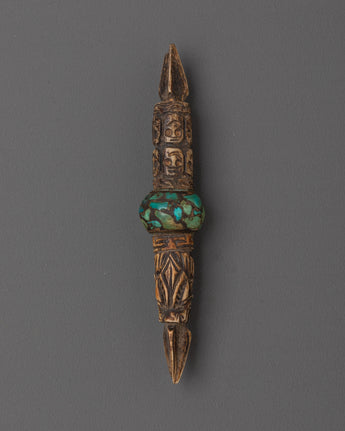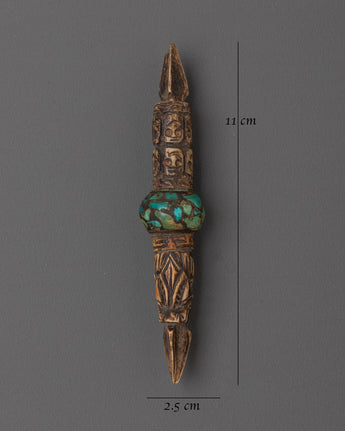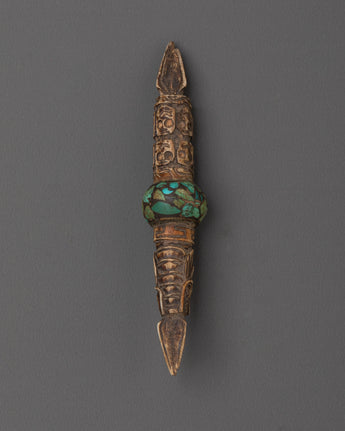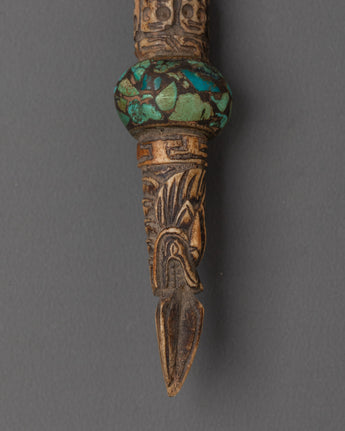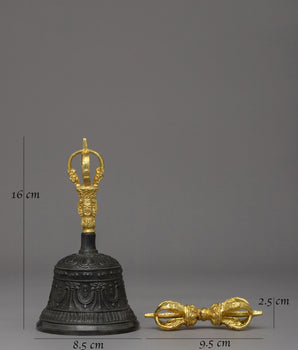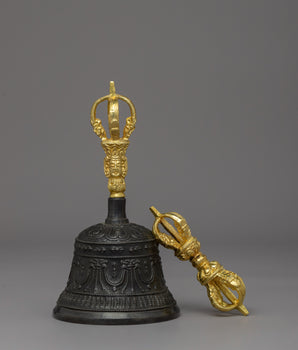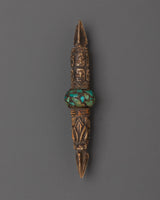
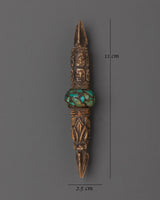
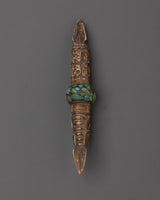
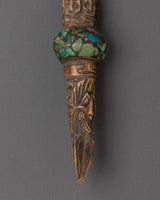
Phurba Spiritual Cleansing Tool | Handcrafted in Nepal

100% AUTHENTIC

HANDMADE

FREE SHIPPING
Tibetan Phurba Spiritual Cleansing Ritual Tool | Perfect for Altar Spaces and Sacred Practices
--------------------------------------------
Size: 11cm (Height) x 2.5cm (Width)
Weight: 0.020kg
Materials: Ethically Sourced Buffalo Bone, Artificial Stones, Turquoise
--------------------------------------------
About The Ritual Item :
This Phurba Spiritual Cleansing Tool measures 11cm in height and 2.5cm in breadth, weighing approximately 0.020kg. This ceremonial blade, crafted from sustainably sourced buffalo bone and adorned with turquoise and simulated stones, is used in Tibetan Buddhist rituals for spiritual purification and protection. The exquisite carvings and turquoise embellishments make it not just a strong instrument but also an eye-catching spiritual item.
Phurbas, which are commonly utilized to cleanse bad energy, summon protection, and enhance ceremonies, are revered in Tibetan culture. The blue stone improves its grounding and healing properties, while the intricately carved buffalo bone body represents power and change. This unique Phurba is used as a spiritual instrument to remove impediments and create serenity and harmony.
Whether you use it for personal rituals, exhibit it as a beautiful item, or give it as a present to a spiritual seeker, this handcrafted Phurba is an important element to any altar or meditation area. Its tiny size and excellent craftsmanship allow it to be exhibited anywhere while bringing spiritual energy into your house.
Introduction To The Phurba :
The ceremonial dagger (Sanskrit: Kila; Tibetan: phurba) is essential for expelling evil and is considered particularly effective in neutralizing the forces obstructing Tantric Buddhist practice. It has ancient origins, first appearing in the Indian Rig Veda as the core blade of the vajra used by Indra to destroy the primordial cosmic snake Vritra. Kila, derived from Sanskrit, was most likely associated with Vedic sacrifices. Meditation on the Vajrakila Tantra, an early Indian scripture first promoted in Tibet in the eighth century by Padmasambhava, one of the founding teachers of Tibetan Buddhism, is used to invoke the three-headed Vajrakila Buddha.
How to Set Up Your Buddhist Shrine?
Find a clean, quiet, and uncluttered spot.
Please set up an altar table and cover it with an altar cloth that calls to you.
Place your sacred item (statue, thangka, or a picture of Buddha) at the center.


